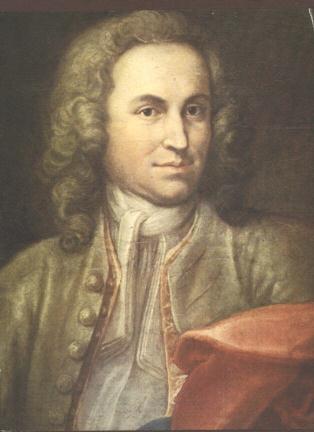|
"However much it is an act of impudence thus to discuss something which is far too profound and complex to be grasped in words, it seems necessary in order to explain all that has been said before, to confess some of the feelings which inevitably come with the playing of this music."
R.Kirkpatrick
Perhaps the source of his genius is unexplainable, or how to make music as great as his is unexplainable, or why his music seems so wonderful to so many may for ever be a mystery.
While an unquestioned genius of the first rank, Bach was not a miracle without context. He copied, studied, and reworked the compositions of others extensively, constantly revised his own material, and taught many others what he knew as best as he could. He is on record as stating (albeit mistakenly!) that anyone who studied and practiced with sufficient diligence could attain similar results. Bach was a teacher: to study his legacy is to honor him.
Bach is considered by many to have been the greatest composer in the history of western music. Bach's main achievement lies in his synthesis and advanced development of the primary contrapuntal idiom of the late Baroque, and in the basic tunefullness of his thematic material. He was able to successfully integrate and expand upon the harmonic and formal frameworks of the national schools of the time: German, French, Italian & English, while retaining a personal identity and spirit in his large output. Bach is also known for the numerical symbolism and mathematical exactitude which many people have found in his music -- for this, he is often regarded as one of the pinnacle geniuses of western civilization, even by those who are not normally involved with music.
Johann Sebastian Bach was born on March 21st l685, the son of Johann Ambrosius, court trumpeter for the Duke of Eisenach and director of the musicians of the town of Eisenach in Thuringia. For many years, members of the Bach family throughout Thuringia had held positions such as organists, town instrumentalists, or Cantors, and the family name enjoyed a wide reputation for musical talent.
The family at Eisenach lived in a reasonably spacious home just above the town center, with rooms for apprentice musicians, and a large grain store. (The pleasant and informative "Bach Haus" Museum in Eisenach does not claim to be the original family home). Here young Johann Sebastian was taught by his father to play the violin and the harpsichord. He was also initiated into the art of organ playing by his famous uncle, Johann Christoph Bach, who was then organist at the Georgenkirche in Eisenach. Johann Sebastian was a very willing pupil and soon became extraordinarily proficient with these instruments.
 When he was eight years old he went to the old Latin Grammar School, where Martin Luther had once been a pupil; he was taught reading and writing, Latin grammar, and a great deal of scripture, both in Latin and German. The boys of the school formed the choir of the St. Georgenkirche, which gave Johann Sebastian an opportunity to sing in the regular services, as well as in the nearby villages. He was described as having 'an uncommonly fine treble voice'. The Lutheran spirit would have been strong in Eisenach, for it was in the Wartburg Castle standing high above the town, that Martin Luther, in hiding from his persecutors, translated the New Testament into German.
When he was eight years old he went to the old Latin Grammar School, where Martin Luther had once been a pupil; he was taught reading and writing, Latin grammar, and a great deal of scripture, both in Latin and German. The boys of the school formed the choir of the St. Georgenkirche, which gave Johann Sebastian an opportunity to sing in the regular services, as well as in the nearby villages. He was described as having 'an uncommonly fine treble voice'. The Lutheran spirit would have been strong in Eisenach, for it was in the Wartburg Castle standing high above the town, that Martin Luther, in hiding from his persecutors, translated the New Testament into German.
Roads were still unpaved in the smaller towns, sewage and refuse disposal poorly organized, and the existence of germs not yet scientifically discovered. Mortality rates were high as a result. At an early age Johann Sebastian lost a sister and later a brother. When he was only nine years old his mother died. Barely nine months later his father also died.
Johann Sebastian and one of his brothers, Johann Jakob, were taken into the home of their eldest brother, Johann Christoph (born l671) who had recently married and settled down at Ohrdruf, a small town thirty miles south-east of Eisenach. Johann Christoph, a former pupil of Pachelbel, was now well established as organist of the St. Michaeliskirche, Ohrdruf.

|







